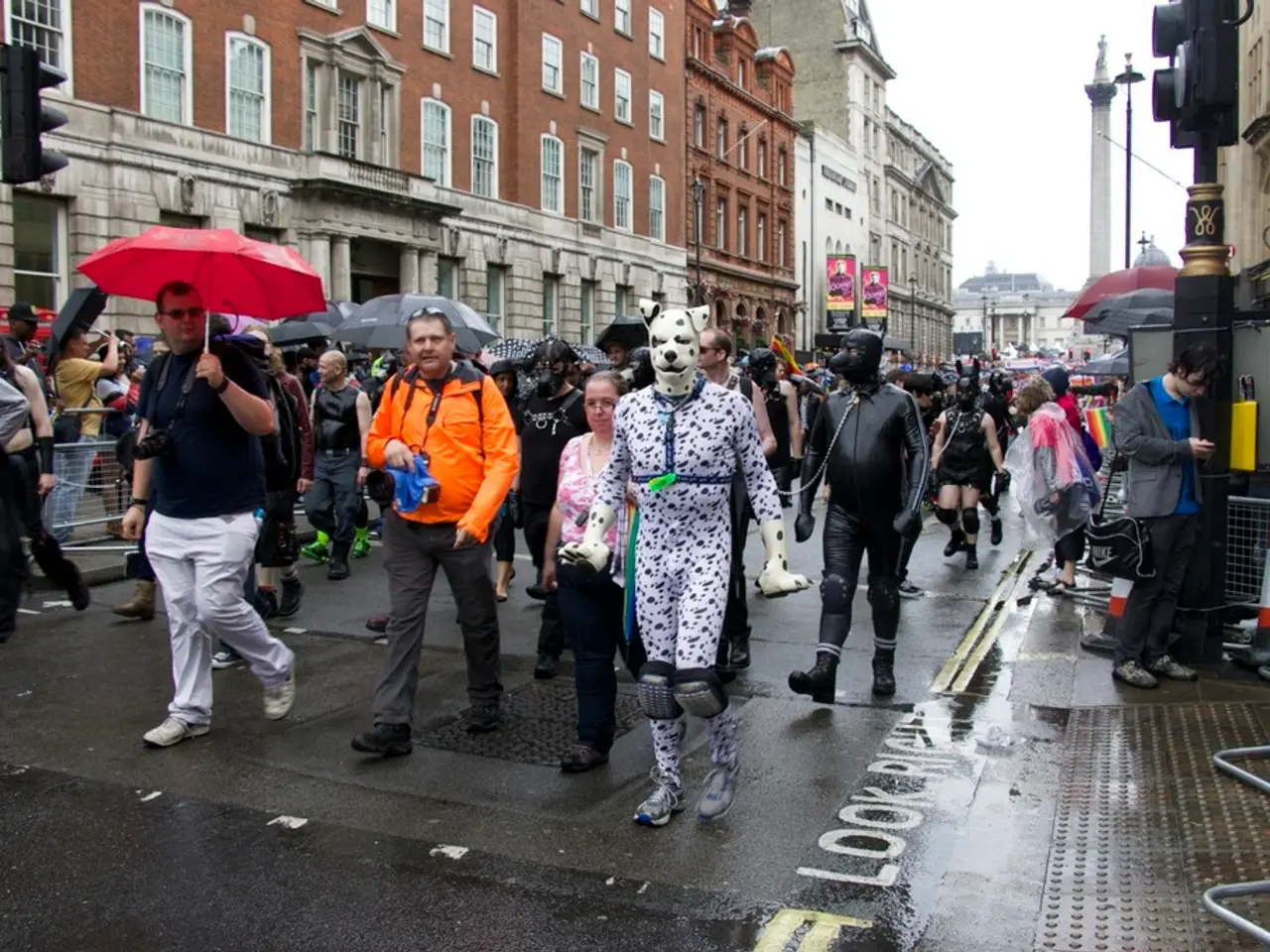Wetter New York faces diminishing federal aid
In the heart of the Northeast, New York City has been facing a series of extreme rain events, testing the city's infrastructure and resilience.
The remnants of Hurricane Ida in 2021 claimed 13 lives, serving as a stark reminder of the city's vulnerability to such weather phenomena. Since the 1950s, there has been a 60% increase in extreme rain events in the region.
On July 14, 2022, Central Park recorded more than 2 inches of rainfall in a single hour, marking a significant challenge for the city's infrastructure. This is the second-highest amount of rain ever recorded at Central Park, surpassed only by the remnants of Hurricane Ida in 2021.
Commissioner Rohit Aggarwala, who also serves as the city's chief climate officer, stated that the sewer system has been worked hard to ensure maximum performance. However, extreme rain events exceed its capacity, making flash floods inevitable. Intersections in low-lying neighborhoods turned into lakes, and cars and trucks were partially submerged on some highways.
The MTA pumps out about 10 million gallons of water from the subway system daily, with many of the pump rooms being 40 to 50 years old and in need of upgrades. To handle extreme rains, changes have been made to the subway system, including constructing a step up at street-level subway entrances and raising some sidewalk ventilation grates.
These changes were made possible by federal funding from the Federal Emergency Management Agency and other agencies. The work of draining flood waters falls to the Department of Environmental Protection.
New York City's infrastructure was designed to handle rainfall rates of 1.7 inches of rain per hour. However, the city is now experiencing storms with rainfall rates of over 2 inches per hour. This is a testament to the challenges faced by the city's aging infrastructure.
The Metropolitan Transportation Authority set aside over $7 billion to fortify its infrastructure against storm surge flooding after Superstorm Sandy in 2012. Robert Freudenberg, vice president for energy and environment at the Regional Plan Association, stated that New York City is seeing a payoff from investments made in flood mitigation in recent years.
Social media showed water cascading into subway stations and shooting up like geysers from overwhelmed sewer pipes, painting a vivid picture of the city's struggle against the deluge.
Despite these challenges, New York City continues to adapt and strengthen its infrastructure in the face of extreme weather events. The city's resilience and determination are on full display as it navigates this new normal.
The person responsible for New York City Emergency Management in 2021, coordinating measures against heavy rainfall events, could not be identified in the available search results.
Read also:
- Understanding Hemorrhagic Gastroenteritis: Key Facts
- Stopping Osteoporosis Treatment: Timeline Considerations
- Tobacco industry's suggested changes on a legislative modification are disregarded by health journalists
- Expanded Community Health Involvement by CK Birla Hospitals, Jaipur, Maintained Through Consistent Outreach Programs Across Rajasthan








